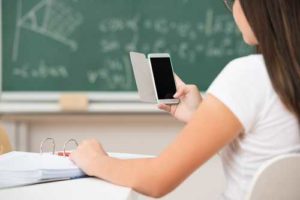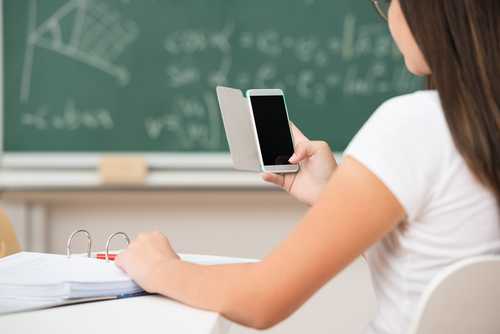As NYC lifts its infamous cellphone ban, one local principal sees nothing but possibilities
 As the principal of Hudson High School of Learning Technologies in Manhattan, I know firsthand how cellphones can both help students stay in touch in today’s world and how they can be a valuable teaching and learning tool in the school setting. The New York City Department of Education’s recent decision to lift the cellphone ban in schools—a decision I support—acknowledges and affirms this notion.
As the principal of Hudson High School of Learning Technologies in Manhattan, I know firsthand how cellphones can both help students stay in touch in today’s world and how they can be a valuable teaching and learning tool in the school setting. The New York City Department of Education’s recent decision to lift the cellphone ban in schools—a decision I support—acknowledges and affirms this notion.
At Hudson HSLT, we strive to create an academically rigorous and personalized environment that prepares all of our students to be college- and career-ready. We want our students to be critical thinkers, ones who practice the art of questioning and are able to deconstruct, reconstruct, and communicate information in today’s society.
We believe that the use of technology, including cellphones, when implemented purposefully to support classroom instruction, can help foster these skills.
Hudson HSLT is a digitally-focused and device-agnostic one-to-one computing school; we look at technology as a support for teaching and learning. Day-to-day, our teachers might use mobile devices in class for their daily drop-everything-and-read (DEAR) activity or to let students work on their class blogging assignments.
But we don’t ignore the larger issues surrounding technology’s role in the classroom, and students aren’t expected to navigate through using technology by themselves.
Next page: Managing the digital divide
We work diligently on teaching students how to be digitally responsible through learning how to recognize authentic online sources and cite them accordingly. Also, since much of our student work is outward facing, we teach students appropriate ways to present themselves through online mediums. We show them organizational skills, such as managing files and their time online effectively. All that we do with technology at our school is designed to move students from digital natives to digital learners.
The decision from the NYCDOE to end its ban on cellphones at school will allow us to add these versatile devices to the mix as we continue to incorporate technology and mobile devices into our teaching and learning processes in meaningful ways. One thing we—and other schools throughout the city—need to be mindful of is the digital divide, which still exists between those who have smartphones and those who do not—and between those who have internet access at home and those who do not.
Just like with laptops and iPads, some students simply might not have cellphones. It’s up to us to accommodate for that, and to make sure all students have comparable tools for learning. For example, if we ask students to take notes on their phones or take photos for a project, we need to make sure devices are available for students who do not have them so they can participate in those activities.
The best way to keep any technology from being a distraction is through engaging instruction and the continued teaching of digital responsibility. While we may have students who check a text message in the hallway or on their way to a class, students will use their phones as a tool to further their learning while in the classroom. Our students have been responsible with the use of technology so far, and we believe that will continue now with the freedom to bring and use cellphones in school.
Instead of worrying about misuses of the technology, we will continue to keep our focus on improving our own teaching so students are engaged and challenged. My teachers use the SAMR Model—which stands for substitution, augmentation, modification, and redefinition—to see how educational technology might impact teaching and learning. We are always looking at how the technology can complement and support innovation in what is being taught, so that the technology is maximized to meet teacher and student needs.
We know that technology will continue to greatly impact education. Instead of honing in on the potential cons of cellphones in the classrooms, we believe that it is important to think of the possibilities they can afford if they are used intentionally to enhance teaching and learning for all our students.
Nancy Amling is the principal of Hudson High School of Learning Technologies, an Institute for Student Achievement (ISA) partner school located in the Chelsea neighborhood of Manhattan in New York City.
- TC- What student choice and agency actually looks like - November 15, 2016
- What student choice and agency actually looks like - November 14, 2016
- App of the Week: Science sensor meets your smartphone - November 14, 2016



Comments are closed.